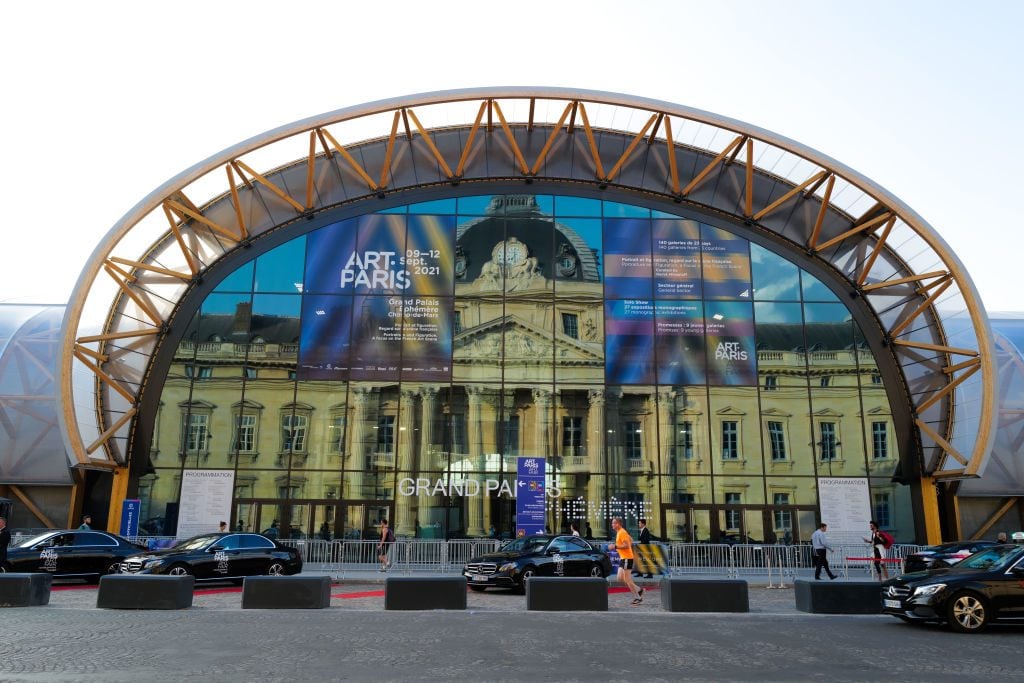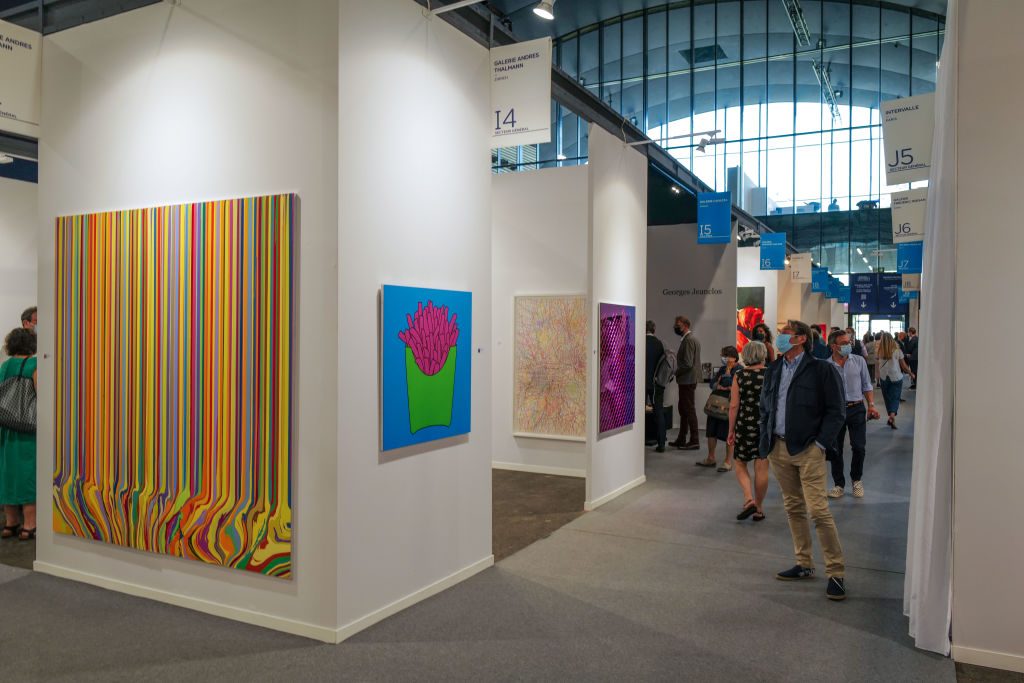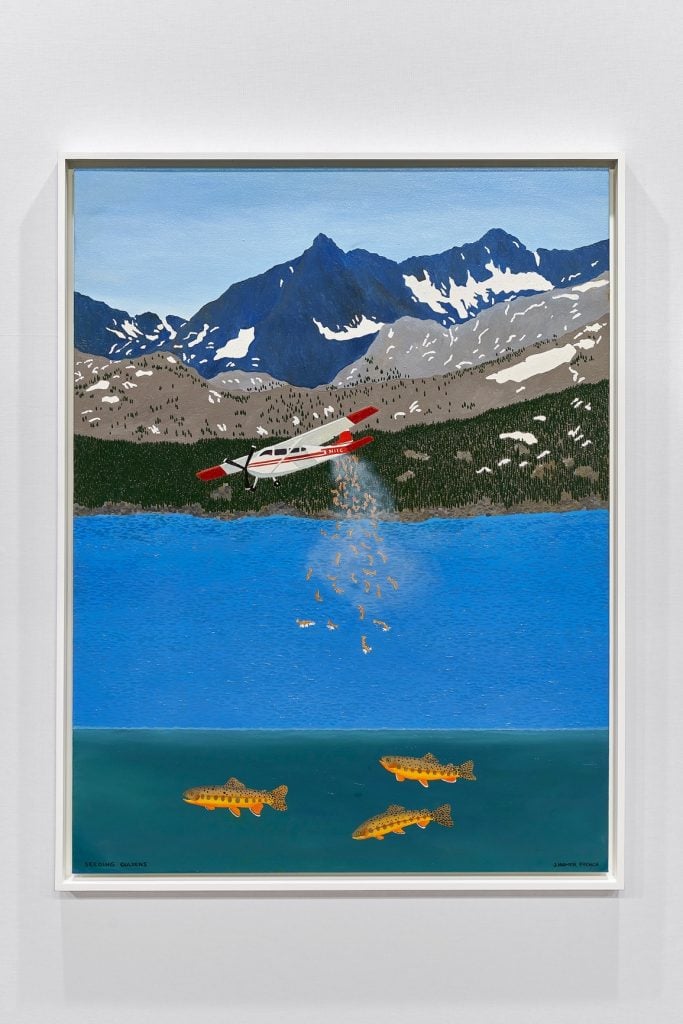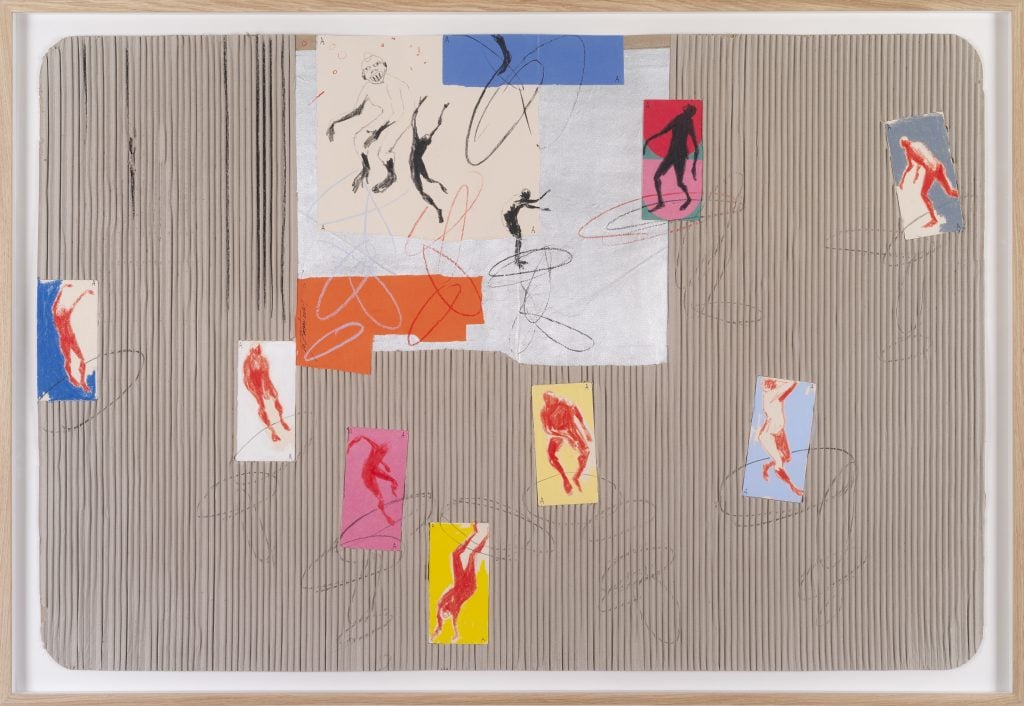Artnet News Pro
Mega-Galleries Keen to Extend Their Tendrils Into Local Scenes Have Boosted the Profile of a Surprisingly Energetic Art Paris
The event is the first art fair to take place in the Grand Palais Ephémère.

The event is the first art fair to take place in the Grand Palais Ephémère.

Anna Sansom

Art Paris kicked off the fall fair calendar in Paris yesterday as the first fair to take place in the Grand Palais Ephémère, the “ephemeral Grand Palais.” Running from September 9–12, the usually smaller-scaled fair’s twenty-third edition features 140 galleries (65 percent of them French), from 20 countries, and has been boosted by the first-time presence of mega-galleries Thaddaeus Ropac, Almine Rech and Kamel Mennour.
The mood was buoyant as exhibitors evoked a desire to reach local collectors, despite the compulsory Covid-19 health pass, and mandatory mask-wearing.
Installed on the Champs-de-Mars, the Grand Palais Ephémère—a temporary, eco-friendly structure designed by French architect Jean-Michel Wilmotte—has proved a hit, although several exhibitors complained about the sweltering heat. Inaugurated in May, it is hosting events during the three-year renovation of the Grand Palais, and opens onto a lawn overlooking the Eiffel Tower.
“We postponed the fair from April [due to the pandemic] and had reserved the Grand Palais Ephémère for April and September [in order to secure the venue for our event],” the fair’s director Guillaume Piens told Artnet News.

A general view of the Art Paris exhibition on September 08, 2021 in Paris, France. Photo by Pierre Suu/Getty Images.
Piens, who helmed the last edition of the fair in the Grand Palais last September, had “no doubt” about going ahead this fall—unlike another smaller Parisian fair, Galeristes, which has canceled its October edition citing “constraints and uncertainties.”
Encouraged by nearly 70 percent of the French population being fully vaccinated, Piens was adamant that “this model of a local fair is well-adapted to the current situation,” in which many people remain hesitant to travel internationally to higher profile events. “Our positioning works well today—prestigious galleries mixed with smaller galleries,” he added.
For years, Art Paris has been striving to attract more prominent galleries so it can be “complementary” to Fiac, France’s international contemporary art fair in October. In that sense, it has ironically benefited from the pandemic: there is now a greater emphasis on local scenes.
“After the lockdowns, there’s a real movement towards the regional side [of the art world] and to see collectors again,” said Bénédicte Burrus, director of Thaddaeus Ropac, which has so far sold a Tony Cragg sculpture (€250,000–€300,000), a painting by Mandy El-Sayegh ($30,00–$35,000), and a painting by Imi Knoebel (price not provided). The gallery has brought along less expensive pieces to Art Paris, which is one of four European fairs in which Ropac is participating this fall, along with Art Basel, Frieze and Fiac.

Work by Jessie Homer French. Courtesy Massimo De Carlo.
“We’ve sold very well; it doesn’t matter that it’s one month before the Fiac,” gallerist Kamel Mennour remarked. The gallery has sold works by Latifa Echakhch, Camille Henrot, Mohamed Bourouissa and Petrit Halilaj (prices not provided.) Looking around at the Grand Palais Ephémère, he added: “The place is beautiful and a success.”
Massimo De Carlo, which inaugurated a small Parisian space, Pièce Unique, in the Marais in February (its name being a homage to the late Italian dealer Lucio Amelio, whose trademark the gallery acquired), is another first-time exhibitor.
“We’re looking for a good network of French collectors, so we felt it was important to be present at Art Paris and Fiac,” Laura Ravelli, the gallery’s Paris director, said. The gallery has sold several pieces from its solo presentation of tapestries and paintings, priced at $16,000–$60,000, by self-taught, 81-year-old American artist Jessie Homer French.
Longstanding participants in the fair have welcomed the presence of larger galleries. “I’ve been fighting for the level of exhibitors and artworks to improve,” said Romain Degoul, selection committee member and director of Galerie Paris-Beijing, which has sold abstract drawings on felt by Léa Belooussovitch. “Everybody thought it would be impossible to replace the Grand Palais, but this is in the heart of the seventh arrondissement near where collectors live,” he said.
Fair highlights range from Hélène Bailly’s presentation of drawings, ceramics and sculptures by Picasso to Galerie Martel’s solo booth on Italian artist Lorenzo Mattotti’s mythical and intimate paintings and drawings of couples, priced at €4,400–€16,000.

Nú Barreto, Le jeu (2021). Courtesy the artist and Galerie Nathalie Obadia.
Inevitably, some works on view reflect upon the pandemic. At Galerie Les Filles du Calvaire are black-and-white drawings by Thomas Lévy-Lasne of people screen-shotted behind their computer screens, priced €2,500. Lévy-Lasne is one of 20 French portraiture and figurative artists selected by curator Hervé Mikaeloff as part of a focus on the French scene.
Then, at Nathalie Obadia, who is expanding on her presence in Paris by inaugurating a new space on Rue du Faubourg Saint Honoré today, are collages on cardboard by Nú Barreto, priced at €14,000-15,000, that explore spatial confinement. “Even people in large apartments faced physical restriction during the lockdowns,” Barreto said. “People need to nourish themselves again with culture; it’s what art lovers were missing because of Covid-19.”